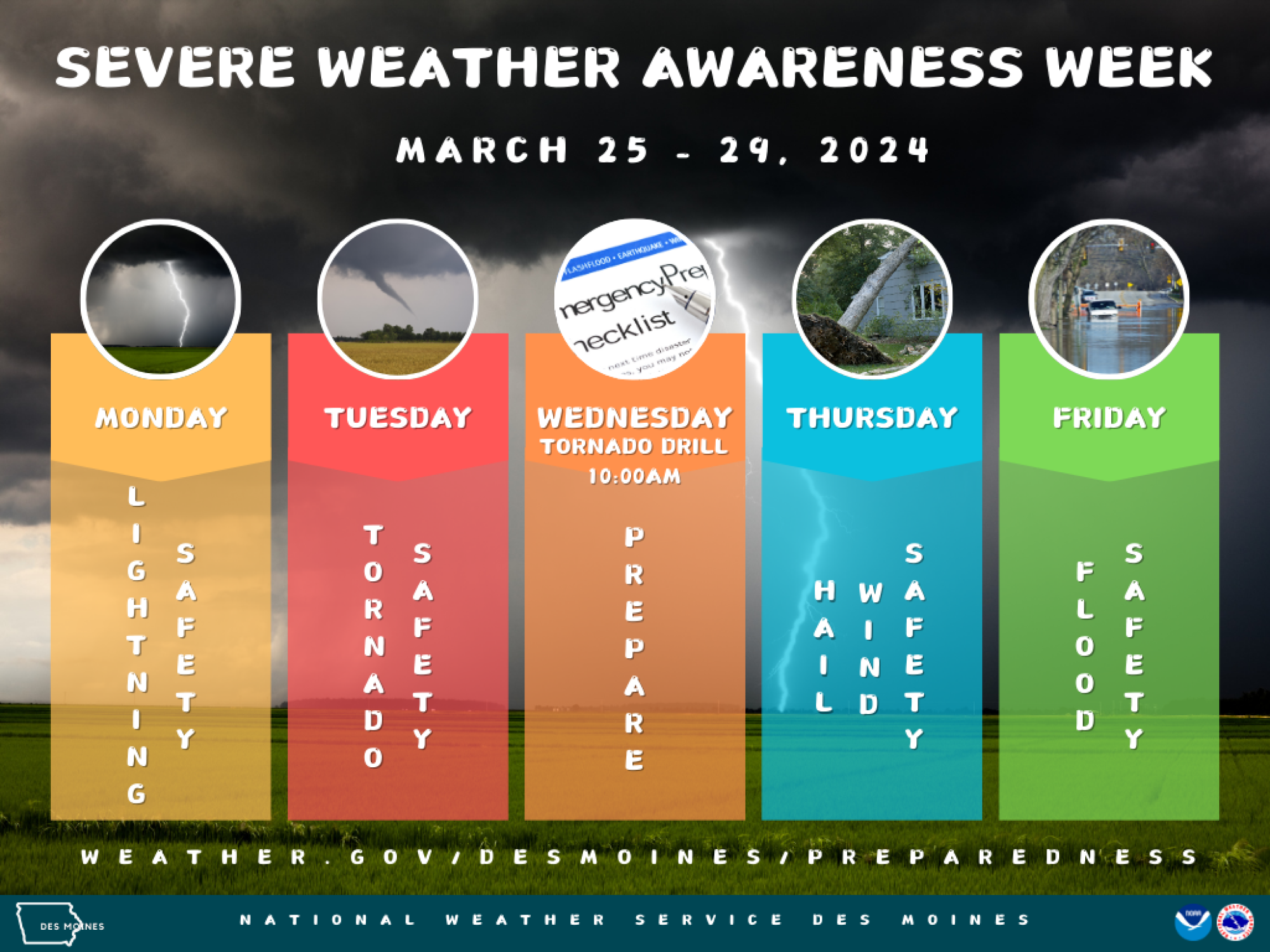Protecting Yourself And Your Family From Floods: Severe Weather Awareness Week Day 5

Table of Contents
Assessing Your Flood Risk
Understanding your location's flood history and risk zones is crucial for effective flood preparedness. Knowing your risk level allows you to take appropriate preventative measures and develop a tailored emergency plan. One of the most valuable tools available is the FEMA flood map.
-
Check to determine your property's flood risk. This service provides detailed information about flood zones and historical flood data for your area. Understanding your flood zone designation (e.g., A, AE, X) is critical in determining your level of risk and insurance needs.
-
Consider geographical factors: Proximity to rivers, streams, low-lying areas, and areas with poor drainage significantly increase your flood risk. The topography of your land and the presence of any nearby bodies of water should be carefully considered.
-
Identify potential flood sources near your home:
- Identify nearby rivers, streams, or drainage ditches.
- Note any areas prone to ponding or water accumulation.
- Observe the elevation of your property relative to surrounding areas.
-
Note previous flood events in your area:
- Research historical flood events in your community. Local libraries and government websites are great resources.
- Talk to your neighbors; their experiences can provide valuable insights.
-
Research local flood warnings and evacuation routes: Familiarize yourself with the warning systems in place and know the designated evacuation routes. This crucial information should be readily available in your flood preparedness plan.
Creating a Flood Preparedness Plan
A comprehensive flood preparedness plan is essential for efficient evacuation and recovery. This plan should be detailed, practiced regularly, and easily accessible to all family members.
-
Develop an evacuation plan, including multiple escape routes: Having alternative routes ensures flexibility in case one route becomes impassable due to flooding.
-
Identify a safe meeting place for family members: This should be a designated location outside your flood-prone area, where everyone can regroup after evacuating.
-
Prepare a "go-bag" with essential supplies: This bag should be easily accessible and contain everything you need for several days. (See detailed list below)
-
Essential Supplies for Your Flood Preparedness Kit:
- Water: At least a 3-day supply of water per person (one gallon per person per day).
- Food: Non-perishable food items that require minimal preparation.
- First-aid kit: Include essential medications and any necessary medical supplies.
- Flashlight and batteries: Essential for navigating in the dark and for signaling for help. A hand-crank or battery-powered radio is also recommended to stay informed during a power outage.
- Important documents: Copies of identification, insurance policies, and other vital documents should be kept in a waterproof container.
- Cash: ATMs may be unavailable during a flood, so having cash on hand is crucial.
- Changes of clothes and sturdy shoes: Protect yourself from cold and debris.
- Whistle: A loud whistle can be used to signal for help.
-
Practice your evacuation plan regularly, especially with children: Regular practice makes the plan second nature, reducing panic and confusion during a real emergency. This is crucial for flood safety.
-
Include pet evacuation plans: Ensure your pets are accounted for in your evacuation plan.
Protecting Your Property Before a Flood
Taking proactive steps to protect your property before a flood significantly reduces potential damage.
-
Elevate valuable possessions and appliances: Move furniture, appliances, and important documents to higher floors or shelves.
-
Seal cracks in your foundation to prevent water entry: This simple step can help to minimize water damage.
-
Install flood barriers or sandbags (if appropriate and time allows): This can provide a temporary barrier against rising floodwaters.
-
Consider purchasing flood insurance: Flood insurance is not typically covered under standard homeowners insurance policies.
-
Protect your property:
- Move furniture and appliances to upper floors: Prioritize electronics and other sensitive items.
- Protect electrical equipment with waterproof covers: This will prevent short circuits and damage from water.
- Clear gutters and drains to prevent water buildup: Ensure that water can flow away from your home freely.
- Understand your homeowners/renters insurance coverage for flood damage: Contact your insurance provider to clarify your coverage and discuss flood insurance options.
Responding to a Flood Warning
Knowing how to respond to a flood warning is crucial for your safety and well-being.
-
Stay informed through local news, weather alerts (), and official channels: Reliable information is key to making informed decisions.
-
Evacuate immediately if instructed by authorities: Never hesitate when authorities issue an evacuation order.
-
Never drive through flooded areas: Floodwaters can be deceptively deep and fast-moving, posing a serious risk of being swept away.
-
Turn off utilities if instructed or if water approaches your home: This will help prevent electrical hazards and further damage.
-
During a flood:
- Monitor weather reports consistently: Stay updated on the changing situation.
- Heed evacuation orders without delay: Evacuate as soon as possible.
- Be aware of rising water levels: Monitor the water's level and be prepared to move to higher ground if needed.
- Seek higher ground if evacuation is not immediately possible: If you cannot evacuate immediately, find a safe elevated location.
Conclusion
Being prepared for floods is crucial for protecting yourself and your loved ones. By assessing your risk, creating a comprehensive flood preparedness plan, protecting your property, and responding effectively to warnings, you significantly reduce the potential for damage and injury. Remember, proactive flood preparedness is the best defense. Take the steps outlined above to improve your family's flood preparedness and ensure your safety during Severe Weather Awareness Week and beyond. Don't delay; start your flood preparedness plan today!

Featured Posts
-
 Astonishing Highway Refueling 90mph Police Chase Ends In Bizarre Fuel Stop
May 25, 2025
Astonishing Highway Refueling 90mph Police Chase Ends In Bizarre Fuel Stop
May 25, 2025 -
 Les Nuits De Thierry Ardisson 50 Temoins Et Des Histoires Inoubliables
May 25, 2025
Les Nuits De Thierry Ardisson 50 Temoins Et Des Histoires Inoubliables
May 25, 2025 -
 Find Bbc Big Weekend 2025 Tickets Sefton Park
May 25, 2025
Find Bbc Big Weekend 2025 Tickets Sefton Park
May 25, 2025 -
 Nvidia Rtx 5060 Review A Wake Up Call For Gamers
May 25, 2025
Nvidia Rtx 5060 Review A Wake Up Call For Gamers
May 25, 2025 -
 Trogatelniy Vecher Pamyati Sergeya Yurskogo
May 25, 2025
Trogatelniy Vecher Pamyati Sergeya Yurskogo
May 25, 2025
